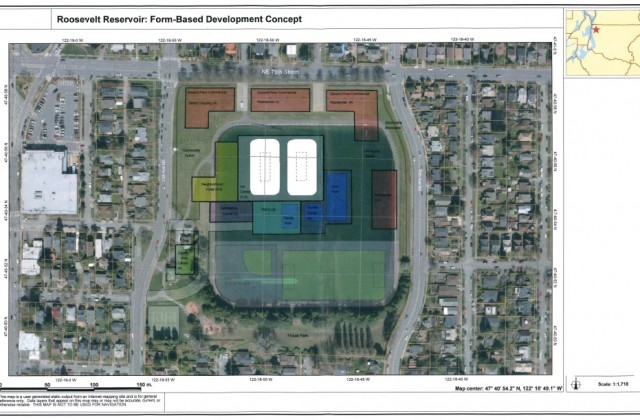Roosevelt Reservoir: Broad Consensus on City Owned Land for Housing.
The debate over how to address housing issues in Seattle is a contentious one, right? It’s even hard sometimes to agree on what the problem is and of course that means differences on what to do. But there doesn’t seem to be anyone, developers, non-profit affordable housing advocates, Councilmemeber Sawant, and neighborhoods who disagree about building housing on land owned by the City. But why isn’t the City responding to this consensus item now? And how do I know there is consensus? Check out what the groups I mentioned are saying.
The Community Housing Caucus, a group of non-profit affordable housing advocates, tenant advocates, and social justice advocates have this to say about public land for housing:
Public land availability: Initiate immediately a thorough and comprehensive strategy to acquire and develop unused, underdeveloped, and available public land for a dramatic expansion of the city’s low income housing stock.
- Inventory the City’s available public land
- Inventory land owned by other public entities including King County, Sound Transit,WSDOT, Port, and other state and county agencies
- Prioritize sites that are readily available
How about the Coalition for Housing Solutions, a group we’re a member of, composed of members of the business community and developers? Here’s what they say about building housing on City owned land:
Utilization of publicly-owned land: The City of Seattle and other public agencies own significant parcels of vacant or underutilized land capable of supporting infill housing. There are a variety of models and partnership arrangements that the City could utilize to develop affordable housing on publicly-owned land.
And how about neighborhood groups. Along with the effort to build housing and a park in Roosevelt, that neighborhood is also banding together to put housing on a soon to be decommissioned City reservoir. There plan includes a lot more, but here’s what they suggest about housing on the site:
New residential mid-rise construction. This could be a mix of apartments, condominiums and active senior housing.
Availability of City Land
Each year the City’s Department of Finance and Administrative Services produces a list of City-owned properties and provides it to City Council. The 2014 list is used for this analysis. That list includes a total of 1,194 properties. Not all are suitable for housing, so as requested during follow-up meetings with Councilmember Sawant and her staff, we screened the properties by the following criteria:
- Within City limits (1,040 remaining)
- Not fully utilized for an existing municipal purpose (210 remaining)
- Not utility-owned (177 remaining)
- Greater than 15,000 square feet (33 remaining).


